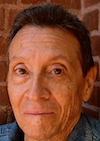 O Canada!
O Canada!
In my previous post I dealt with my involuntary services rendered to Canadian scholar and curator Peggy Cousineau-Levine as convenient whipping boy for her chastisement of all those who “assume that criticism is about applying a standardized (which is to say, ‘international’) system of evaluation that ascertains how a given product ‘measures up’ to abstract, idealized, and currently fashionable notions of what constitutes an acceptable work of art” and who employ a “monolithic approach” involving supposedly “‘universal’ terms of discourse” when discussing Canadian photography — with yours truly held up as the prime example of these nefarious tendencies.
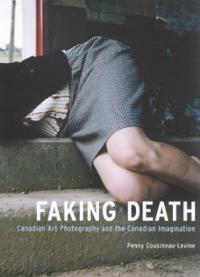 Cousineau-Levine fired this grapeshot salvo in the opening paragraph of her book Faking Death: Canadian Art Photography and the Canadian Imagination (Montreal, Canada: McGill-Queen’s University Press, 2003). The book then served as the basis for an exhibition by the same title curated by its author, shown in New York in early 2006 at the Jack Shainman Gallery in Chelsea. (I’d gone to China, and missed the show. Click here for Roberta Smith’s February 3, 2006 New York Times review.)
Cousineau-Levine fired this grapeshot salvo in the opening paragraph of her book Faking Death: Canadian Art Photography and the Canadian Imagination (Montreal, Canada: McGill-Queen’s University Press, 2003). The book then served as the basis for an exhibition by the same title curated by its author, shown in New York in early 2006 at the Jack Shainman Gallery in Chelsea. (I’d gone to China, and missed the show. Click here for Roberta Smith’s February 3, 2006 New York Times review.)
Clearly a manifestion of the creativity of the Canadian imagination: Cousineau-Levine imagined me holding positions patently antithetical to those I’ve long espoused, then used that fictionalized version of me as a springboard from which to launch her argument.
Our Home and Native Land!
 If, even today, there exists some “standardized … ‘international’ … system of evaluation that ascertains how a given product ‘measures up’ to abstract, idealized, and currently fashionable notions of what constitutes an acceptable work of art” in photography, I have absolutely no idea what it is. Aside, that is, from once-trendy postmodernist theory and its dicta, which permeate Cousineau-Levine’s project but were just entering the discourse on photography in the mid-’70s.
If, even today, there exists some “standardized … ‘international’ … system of evaluation that ascertains how a given product ‘measures up’ to abstract, idealized, and currently fashionable notions of what constitutes an acceptable work of art” in photography, I have absolutely no idea what it is. Aside, that is, from once-trendy postmodernist theory and its dicta, which permeate Cousineau-Levine’s project but were just entering the discourse on photography in the mid-’70s.
Unlike so many of my colleagues, I never drank the pomo Kool-Aid. So I can certify that, in 1974, when Cousineau-Levine accuses me of applying such a “monolithic approach,” I neither did so nor could have if I’d wanted to.
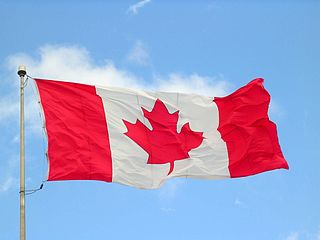
Canadian flag, Halifax, Nova Scotia, 2004, by Jared Grove. Courtesy Creative Commons.
At that juncture the medium’s field of ideas was in a state of extreme flux, the kind of crisis that philosopher of science Thomas Kuhn identified as “paradigm shift.” The very idea of photography criticism as a legitimate discipline and subset of the discourse on art was new and amorphous right then. You could count its North American practitioners on your fingers and toes, with digits left over; the hands and feet of three people would have sufficed for the global total of our cohort.
Few of us had anything in common beyond our fascination with the medium. Not even an agreed-upon vocabulary and set of working definitions, much less something resembling a “standardized ‘international’ system of evaluation.” Deliberately misleading readers unfamiliar with that period into believing otherwise constitutes an act of scholarly irresponsibility verging on the unethical. This is pure fantasy, baseless and unsupportable, unworthy of any reputable historian.
With Glowing Hearts We See Thee Rise …
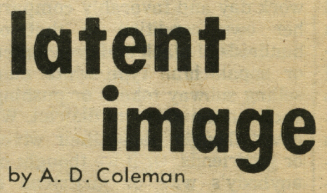
“Latent Image” column logo, Village Voice, ca. 1968.
During that period I was working out my own hermeneutic understandings and testing my exegetic strategies in public, in my columns in the New York Times and the Village Voice. Contrarian that I am, and was then, I wouldn’t have subscribed to any “standardized international system of evaluation” for photographs had I known of one, which I didn’t ― because nothing of the sort existed. (The ideas propounded by John Szarkowski in The Photographer’s Eye might have come closest, but I hadn’t found them as persuasive as did others — especially proponents of that “snapshot mode” to which I’d referred in my review of John Max’s work, which Cousineau-Levine found objectionable.)
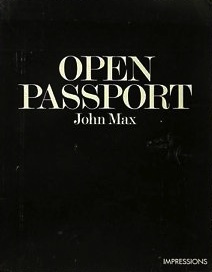 And I know of no evidence fingering my writing as the model for such a system used by others, then or subsequently. So I enter a plea of not guilty to the charges levelled by Cousineau-Levine, and think now, as I did in 1974, that I did neither John Max (who died in 2011) nor Canadian photography any disservice with my brief, respectful review of Max’s book Open Passport.
And I know of no evidence fingering my writing as the model for such a system used by others, then or subsequently. So I enter a plea of not guilty to the charges levelled by Cousineau-Levine, and think now, as I did in 1974, that I did neither John Max (who died in 2011) nor Canadian photography any disservice with my brief, respectful review of Max’s book Open Passport.
Cousineau-Levine must know that. She’s been around long enough that she has no excuses; she was writing at the same time. Why she pretends to ignorance on that score in her book I can’t say. No doubt there’s something distinctly Canadian about all this, but assuredly we’ll need a Canadian to explain it.
True Patriot Love in All Thy Sons Command!
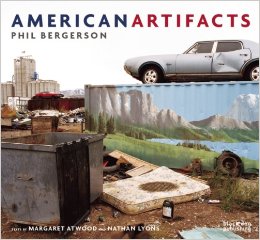
Phil Bergerson, “American Artifacts” (cover), 2014
To maintain even a semblance of intellectual integrity, Cousineau-Levine would have to direct the same accusations at Canadian curator and photography historian David Harris, Associate Professor, School of Image Arts, Ryerson University, Toronto. In his jacket-flap blurb for Canadian photographer Phil Bergerson’s just-published monograph American Artifacts — a follow-up to to his 2004 book Shards of America — Harris, with Bergerson’s obvious approval, places this photographer squarely in the lineage of Walker Evans, Robert Frank, Nathan Lyons, and Lee Friedlander.
Not a Canadian among them, unless you count the Swiss emigré Frank (long a part-time resident of Nova Scotia). Yet I feel confident that Cousineau-Levine will not excoriate her compatriot Harris for committing hegemonic monolithic universalizing blahblahblah, nor her fellow citizen Bergerson for approving it.
I have no problem with Bergerson feeling himself part of that tradition, nor with Harris placing him within it. Which hardly means that I think all photographic roads lead to the Great Satan, since it wouldn’t bother me if a U.S. photographer claimed Edward Burtynsky as a primary influence. To the contrary, I concluded a report on the 1991 edition of the biennial festival Mois de la Photo à Montreal as follows:
What the Mois as a whole seemed to propose … was that Canada ― along with virtually everyplace else ― has become yet another melting-pot of photographic styles. That there is strong and, indeed, world-class work being produced there is, from the evidence provided by this event, undeniable; the Mois serves well its announced purpose of acting as a platform for that work and a forum for notable lesser-known work from elsewhere; and the city of Montreal, which hosts a great many festivals of the arts, is clearly capable of (and interested in) serving as a springboard for such an exchange of lens imagery.
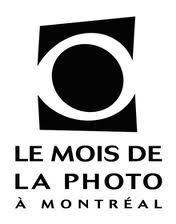 But perhaps the third Mois ― on which Vox Populi [the festival’s nonprofit organization] and its support staff “are now setting their sights,” according to the catalogue’s introduction, and more power to them ― might profitably and provocatively ask the question, “What’s Canadian about Canadian photography today?” Outsider that I am, it’s not a question I’d presume to answer, but I’d love to hear and see what the Canadians themselves think on that score. (See “North of the Border, Up Canada Way,” Camera & Darkroom Photography, February 1992.)
But perhaps the third Mois ― on which Vox Populi [the festival’s nonprofit organization] and its support staff “are now setting their sights,” according to the catalogue’s introduction, and more power to them ― might profitably and provocatively ask the question, “What’s Canadian about Canadian photography today?” Outsider that I am, it’s not a question I’d presume to answer, but I’d love to hear and see what the Canadians themselves think on that score. (See “North of the Border, Up Canada Way,” Camera & Darkroom Photography, February 1992.)
We Stand on Guard for Thee!
So I wouldn’t deny that there’s something uniquely Canadian about Canadian photography, perceivable to Canadians (some of them, anyhow) but not to the rest of the world. Indeed, I’ve often acknowledged the cultural specificity of images in general and photographs in particular, rejecting out of hand ― in articles for the Times and other platforms from the late ’60s through the present ― the belief promulgated by Edward Steichen and others that photographs speak in some “universal language,” requiring no translation because all viewers everywhere intuitively understand them the same way.
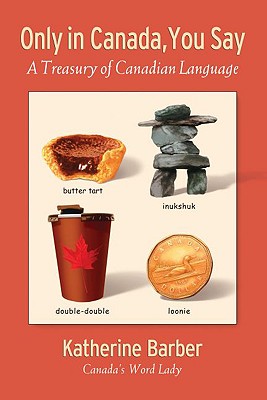
Katherine Barber, “Only in Canada, You Say,” by (2007), cover
And I’ve long called for increased translation into English of critical and historical texts in other languages, and vice versa, terming the shortage of same a major blockage in the flow of the discourse on photography, precisely because I believe that critics from within a culture can tease out significant aspects of a work that outsiders will likely miss.
At the same time, arguing that only a Canadian can understand Canadian photography — by John Max, Sandra Semchuk, Arnaud Maggs, Jeff Wall, and Suzy Lake, among others — verges on solipsism. And rebuking non-Canadians for not venturing their considerations of such Canadianness, which Canadians would reasonably consider presumptuous, creates a double-bind stuation. (Complicating this even further, we have Canadian media theorist Marshall McLuhan‘s sensible proposal that “Whoever discovered water, it wasn’t a fish” — suggesting that non-Canadian observers might well note aspects of Canadian culture that natives take for granted.)
•
This post supported by a donation from photographer Peter Kayafas.






Big Canadian Chip on Shoulder!
So many “famous” Canadians are successful due to working in USA (long list of great actors and brilliant comedians for example), so gaining cultural recognition outside of Canadian borders just requires competing in the American ballpark; hence picking a fight with a well known and respected American colleague easily serves to elevate a lesser known Canadian critic’s work to that internationally recognized level of accomplishment.
It’s negative, manipulative and disingenuous, but it’s still good old fashioned name-dropping used to boost oneself in others’ esteem, and should be taken as a backhanded compliment.
But the fact is, Canada has a global public relations problem in all its endeavors, operating as it does in the shadow of its southern neighbor. (And I speak as a descendant of French Canadian settlers who crossed the Atlantic in 1653, and again crossed the border to Troy, NY at the turn of the 19th century in order to escape abject poverty!)
Maybe Canadian-ness is beyond understanding to outsiders because the most successful Canadians have yet to enlighten us — despite having ample opportunity to do so on a level playing field.
XXX, Colleen (great-granddaughter of Oliver Charette, of the village of Charette, Quebec, Canada.)
Charette is a municipality of about 1000 people located in Maskinongé Regional County Municipality, in Quebec, Canada. (Not far from the St. Lawrence Seaway, about 1/2 way between Quebec and Montreal.)
All these years I never knew about your Canuck roots.
If a compliment lies buried in this, for me the willful distortion of my words and my positions outweighs it by far.